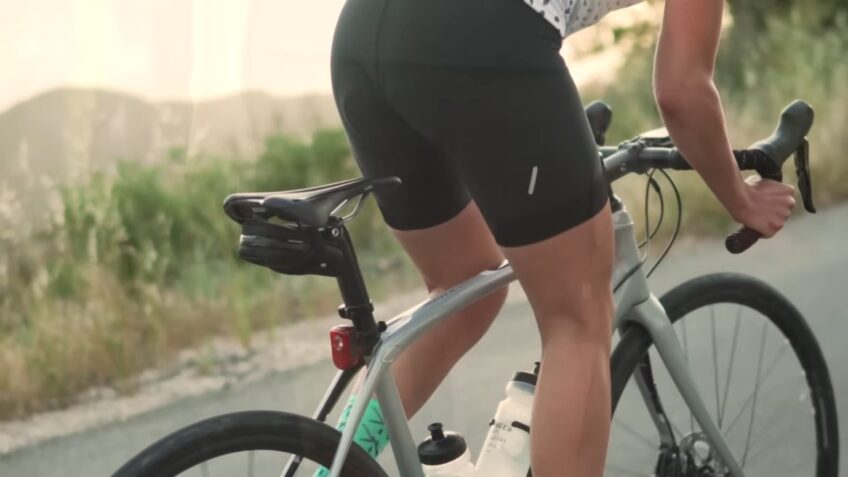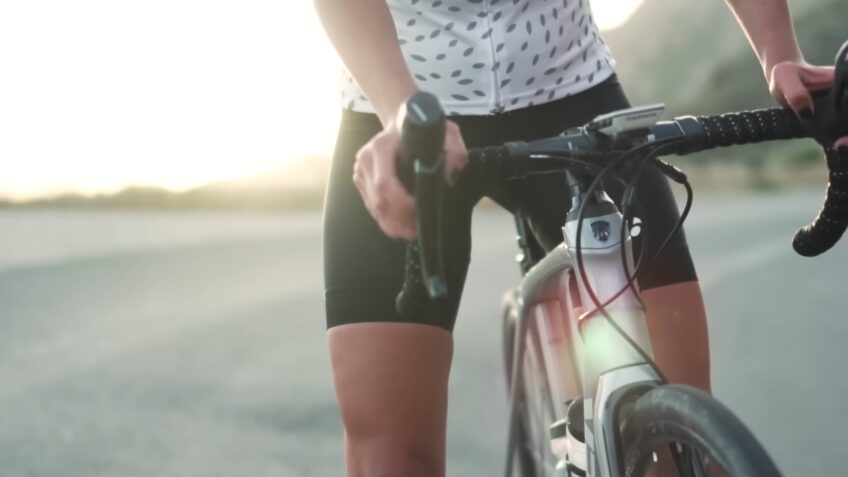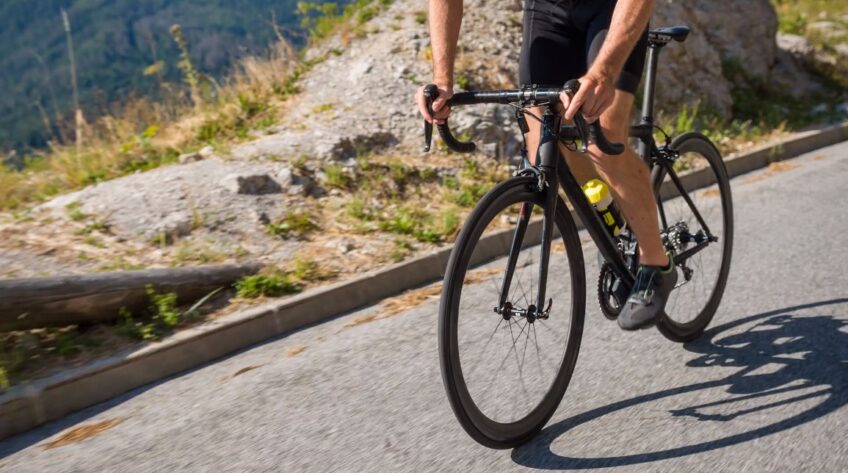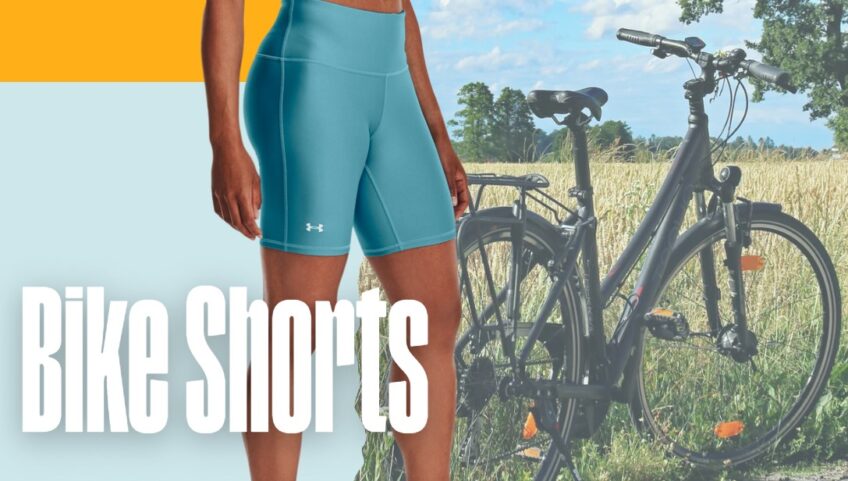Bike shorts are a staple of the cycling world, providing comfort and protection for riders during long rides or intense workouts. However, one question that has been a constant source of debate among cyclists is whether or not to wear underwear with bike shorts.
While the answer to this question is ultimately a matter of personal preference, there are several factors to consider when making your decision. In this blog post, we’ll delve into the pros and cons of both sides of the argument, address common misconceptions, and provide valuable insights to help you make an informed choice.
The Design and Purpose of Bike Shorts
Before we dive into the debate, it’s essential to understand the design and purpose of bike shorts. Also known as cycling shorts or padded shorts, are specifically designed for the unique demands of cycling. They are constructed with a few key features:
- Moisture-wicking fabric: They are typically made from materials that wick moisture away from the skin, keeping you dry and comfortable during your ride.
- Stretchy, form-fitting fabric: This allows for a wide range of motion and minimizes air resistance, making it easier to pedal efficiently.
- Padding (chamois): This is the most crucial feature of bike shorts. The padded chamois is designed to provide cushioning and support for your sit bones, reducing pressure and friction between your body and the bike seat.
- Flat seams and leg grippers: These prevent chafing and keep the shorts securely in place during your ride.
The Case for Going Commando

Many cyclists argue that wearing underwear with bike shorts is unnecessary and even counterproductive. Here are the primary reasons for this stance:
- Chafing and discomfort: Underwear can cause chafing and irritation, especially during long rides. They are designed with flat seams and moisture-wicking materials to minimize chafing, but adding an extra layer of fabric (underwear) can negate these benefits.
- Reduced effectiveness of the chamois: The chamois is designed to provide direct cushioning and support between your body and the bike seat. Wearing underwear interferes with this, as the fabric can bunch up and create pressure points.
- Moisture management: Underwear can trap moisture, leading to a clammy and uncomfortable feeling. Bike shorts are specifically designed to wick moisture away from the skin, but wearing underwear can impede this process.
- Bacterial growth: Moist, warm environments can promote bacterial growth, increasing the risk of infections and saddle sores. By wearing moisture-wicking bike shorts without underwear, you can help reduce this risk.
The Case for Wearing Underwear
Despite the points mentioned above, some cyclists still prefer to wear underwear with their bike shorts. The reasons for this preference include:
- Personal comfort: Some individuals simply feel more comfortable wearing underwear, regardless of the potential drawbacks.
- Modesty: Wearing underwear can provide an extra layer of coverage, which some people prefer for modesty reasons.
- Extra padding: For some cyclists, the chamois in bike shorts may not provide enough padding. In this case, wearing underwear can offer additional cushioning and support.
- Laundry considerations: Bike shorts should ideally be washed after every use to maintain their moisture-wicking properties and prevent bacterial growth. For some individuals, this may not be feasible, and wearing underwear can help extend the time between washes.
The impact of weather and climate on the decision to wear underwear with bike shorts
Weather and climate can play a significant role in determining whether to wear underwear with bike shorts. In warm weather conditions, sweating can cause chafing and discomfort, and wearing underwear can exacerbate the issue. Additionally, underwear can retain moisture, leading to skin irritation and increased susceptibility to bacterial infections.
Colder weather can create additional challenges for riders. In these conditions, wearing underwear can help provide an additional layer of warmth and insulation. However, it’s essential to choose a breathable and moisture-wicking fabric to avoid trapping moisture against the skin, which can lead to discomfort and increased susceptibility to infections.
In rainy weather, wearing underwear can be a personal preference. Some cyclists choose to wear underwear to provide additional protection against moisture, while others prefer to rely on the moisture-wicking properties of their bike shorts to keep them dry. It’s essential to consider the fabric of the underwear, as well as the bike shorts, to ensure optimal moisture management in wet conditions.
Finding the Right Balance

Ultimately, the decision to wear or not wear underwear with bike shorts is a personal one, and there is no one-size-fits-all answer. However, here are some tips to help you find the right balance and make an informed choice:
- Experiment: Every cyclist is different, and what works for one person may not work for another. Try riding with and without underwear to see which option is more comfortable for you.
- Choose the right chamois: Not all chamois pads are created equal. Invest in high-quality bike shorts with chamois that provide adequate support and cushioning for your needs. This may eliminate the need for additional padding from underwear.
- Opt for seamless, moisture-wicking underwear: If you decide to wear underwear with your bike shorts, choose a seamless, moisture-wicking option to minimize chafing and discomfort. Avoid cotton, as it retains moisture and can contribute to chafing and bacterial growth.
- Prioritize hygiene: Regardless of whether you wear underwear or not, it’s crucial to maintain good hygiene practices. Wash them after every use, and give yourself time to air out and dry off after a ride to reduce the risk of infections and saddle sores.
Alternatives
Wearing padded liners can be a great alternative to wearing underwear with bike shorts. Padded liners are specifically designed to provide comfort and protection during long rides, while also helping to wick away moisture and prevent chafing.
One advantage of padded liners is that they are typically made from breathable and moisture-wicking materials, which can help keep you dry and comfortable during your ride. In addition, padded liners are designed to fit snugly against your skin, helping to prevent bunching and shifting that can lead to discomfort and irritation.
Another benefit of padded liners is that they come in a variety of styles and thicknesses, so you can choose one that best suits your needs. Some liners are designed to be worn under traditional bike shorts, while others can be worn on their own. Additionally, some liners are thinner and more lightweight, while others are thicker and provide more cushioning.
Common Myths and Misconceptions

There are several myths and misconceptions about whether to wear underwear with them. One common myth is that wearing underwear can provide additional support, but in reality, they are designed to provide support and padding without the need for additional layers.
Another myth is that wearing underwear can prevent chafing, but in reality, wearing cotton underwear can actually increase friction and lead to more chafing. They are made of moisture-wicking and breathable materials that are specifically designed to reduce friction and prevent chafing.
Some people also believe that wearing underwear can prevent saddle sores, but again, properly fitting and padded bike shorts are designed to reduce pressure on the saddle and prevent sores.
There are a few situations where wearing underwear with bike shorts may be necessary. For example, some women prefer to wear underwear for added protection during menstruation, and some individuals may prefer the added comfort of a thin layer of underwear.
FAQs
How should bike shorts fit?
They should fit snugly without being too tight or restrictive. They should provide enough stretch for a wide range of motion and should stay securely in place during your ride, with no bunching or sagging.
Can wearing bike shorts without underwear cause hygiene issues?
Wearing them without underwear does not inherently cause hygiene issues, provided you maintain good hygiene practices. Wash them after every use, and give yourself time to air out and dry off after a ride to reduce the risk of infections and saddle sores.
Can I wear compression shorts instead of bike shorts for cycling?
While compression shorts can provide some benefits, such as improved blood circulation and muscle support, they typically do not have the padding (chamois) essential for cycling comfort. You can wear compression shorts under them if desired, but they should not replace them entirely.
Is it okay to wear bike shorts for other activities besides cycling?
While they are designed specifically for cycling, you can wear them for other activities such as running or gym workouts if you find them comfortable. However, be aware that the chamois may not provide the same level of comfort or support for these activities as it does for cycling.
How often should I replace my bike shorts?

The lifespan of bike shorts can vary depending on factors such as usage, care, and quality. As a general rule, you should consider replacing them when the chamois starts to lose its cushioning and support, the fabric becomes stretched or worn, or the moisture-wicking properties decline.
Are there gender-specific bike shorts, and do they make a difference?
Yes, there are gender-specific bike shorts designed to provide a better fit and support for the unique anatomy of men and women. While some cyclists may find that unisex bike shorts work well for them, others may prefer the tailored fit and chamois design of gender-specific options.
Try different styles to determine which one provides the best comfort and support for your needs.
Conclusion
The debate over whether to wear underwear with bike shorts is likely to continue for years to come. Ultimately, the decision comes down to personal preference and comfort.
By taking the time to understand the design and purpose of bike shorts, considering the pros and cons of both sides and experimenting with different options, you can make a well-informed choice that suits your needs and preferences. Happy cycling!

